Good Girls, Bad Girls of the New Testament
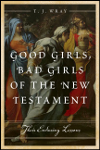 Good Girls, Bad Girls of the New Testament takes readers on a powerful journey through the vast landscape of Roman-occupied Judea during the first century and the genesis of Christianity. This landscape serves as the backdrop for twelve amazing stories of women whose paths intersect, either by providence or design, with the paths of Jesus or Paul. Some of these women are familiar, such as Mary, the mother of Jesus, while others, like the wife of the infamous Pontius Pilate, are lesser known. Whether she is popular or obscure, good or bad, each woman’s story is an important part of the overall Christian narrative.
Good Girls, Bad Girls of the New Testament takes readers on a powerful journey through the vast landscape of Roman-occupied Judea during the first century and the genesis of Christianity. This landscape serves as the backdrop for twelve amazing stories of women whose paths intersect, either by providence or design, with the paths of Jesus or Paul. Some of these women are familiar, such as Mary, the mother of Jesus, while others, like the wife of the infamous Pontius Pilate, are lesser known. Whether she is popular or obscure, good or bad, each woman’s story is an important part of the overall Christian narrative.
Good Girls, Bad Girls of the New Testament invites readers to take a more nuanced look at twelve stories that feature women, to explore their lives more deeply in historical context, and to understand the real story that includes both men and women. The book goes beyond simply telling the story of a particular biblical woman to challenge readers to explore the enduring lessons the ancient writers sought to impart. These timeless lessons are as important for us today as they were thousands of years ago.
—Sherri Brown, Creighton University
T. J. Wray presents twelve stories of New Testament ‘good girls and bad girls’ in a style that readers will find both engaging and edifying. Wray’s studies, although anchored in careful scholarship, are never pedantic and her challenging reflections are aimed at prompting lively discussions and deeper appreciation for these exceptional women of the Bible.
—Robin M. Jensen, Patrick O’Brien Professor of Theology, University of Notre Dame
Some of the women in Good Girls, Bad Girls of the New Testament are household names like Mary Magdalene, some have little-known names like Tabitha, and some have no name at all, like the forever-anonymous woman at the well. Whether they have a name or not makes no difference. T. J. Wray draws at least one lesson to remember from each of the stories of the women upon whom she gazes with a scholar’s and mother’s eye.
—Raymond F. Collins, Brown University
Informed by solid scholarship, this is an eminently readable introduction to the women of the New Testament for students and general readers alike. It is filled with colorful accounts that bring these women to life, drawing thought-provoking parallels to our own day. The picture is fascinating and complex—frequently challenging our assumptions about the lives of these ancient women.
—Margaret Y. MacDonald, Saint Mary’s University
What the Bible Really Tells Us
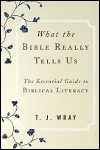 The Bible is the foundational text for Jews and Christians, but most people, having little knowledge of what it actually says, feel less than comfortable navigating its pages. What the Bible Really Tells Us solves this problem, providing a thorough, yet accessible, guide to the Good Book and the ways in which it can enrich one’s life.
The Bible is the foundational text for Jews and Christians, but most people, having little knowledge of what it actually says, feel less than comfortable navigating its pages. What the Bible Really Tells Us solves this problem, providing a thorough, yet accessible, guide to the Good Book and the ways in which it can enrich one’s life.
Opening with a 60-Second Super-Easy Bible Quiz to test your knowledge, author T.J. Wray then provides essential background information to arm readers with the tools necessary to read and interpret passages on their own. And, with these tools in hand, Wray helps readers explore what the Bible really says about key issues today, including:
- Suffering
- Heaven and hell
- Gender and sexuality
- The environment
What the Bible Really Tells Us is an indispensable guide for individuals and groups interested in gaining a fuller understanding of the Bible and the timeless lessons it imparts.
T.J. Wray’s What the Bible Really Tells Us provides the general public and undergraduates in Bible and Religion courses everywhere with a step by step introductory level text in the Hebrew Bible and the New Testament that is perfect for the present crop of readers. Her wry sense of humor and years of teaching expertise come through and the book also untangles some of the most vexing problems of theology, ethics, and society in an easily readable style. A great addition to a personal or institutional library!
Richard Freund, director, Maurice Greenberg Center for Judaic Studies, University of Hartford.
T. J. Wray has done it again! With a remarkable blend of biblical knowledge, human insight, and literary skill, she has hit a ’10’ on the scale in interpreting the Bible for people who have great interest yet relatively little knowledge. How can anyone forget what the Bible has to say about our future, money, sex, the world in which we live, what is fair, and our relationship with God? Perhaps no one but What the Bible Really Tells Us comes to remind us about realities that we dare not forget.
Raymond F. Collins, visiting scholar, Brown University
Honed from years of excellent teaching, TJ Wray’s clarifying guide to biblical literacy is both witty and profound. Now, her readers get the benefit of her compelling classroom instruction and will love her as much as those students do!
Robin M. Jensen, Luce Chancellor’s Professor of the History of Christian Art and Worship, Vanderbilt University
TJ Wray’s What the Bible Really Tells Us is a fascinating, trip through all the basics of Biblical scholarship. Wray writes in an engaging accessible style that is perfect for the average reader who knows something about the Bible but little about the mysteries of what Bible scholars have uncovered in their work over the past two centuries. Wray makes the critical, academic, study of the Scriptures an enlightening but always enjoyable journey. She pulls the readers in from the first chapter and never lets them go with practical stories and examples but plenty of solid content. This book is perfect for the average reader as well as ideal for basic courses in the Bible at the college level.
James A. Tabor, chair, Department of Religious Studies, University of North Carolina, Charlotte; author of The Jesus Dynasty
Good Girls, Bad Girls: The Enduring Lessons of Twelve Women of the Old Testament
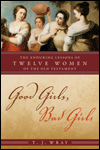 The few popular Bible stories about women are often presented in black and white-the women were good or bad, Ruth or Jezebel. But most of us fall somewhere in between these two extremes. Good Girls, Bad Girls invites readers to take a more nuanced look at twelve women in the Old Testament, to explore their lives more deeply in the historical context, and to grasp what these stories can mean to women today.
The few popular Bible stories about women are often presented in black and white-the women were good or bad, Ruth or Jezebel. But most of us fall somewhere in between these two extremes. Good Girls, Bad Girls invites readers to take a more nuanced look at twelve women in the Old Testament, to explore their lives more deeply in the historical context, and to grasp what these stories can mean to women today.
Good Girls, Bad Girls, is a wonderful, lively book that is based on good Bible scholarship but is far from pedantic. Wray shows how important women in the Bible subverted their patriarchal culture, and were tacitly acclaimed for doing so by the biblical writers. Without whitewashing the violent elements in the stories, she makes these figures come to life as key actors in Israel’s faith and history.
—Lisa Sowle Cahill, Monan Professor of Theology, Boston College
Wray’s lively and well-written presentation of the women of the Old Testament will make readers wonder how they could have overlooked these extraordinary women and their stories. And for once, the good girls are as complex and interesting as the bad ones. Wray shows how these stories will not permit any simple moralizing about these women. Their own struggles to survive and flourish in a world often stacked against them truly provide ‘enduring lessons’ for women attempting to make sense of their lives today.
—Carol A. Newsom, Emory University
Good Girls, Bad Girls is a lively, informative, and thoughtful presentation of twelve of the most fascinating female figures in the Hebrew Bible (Old Testament). Wray looks at these women with fresh eyes and describes them in clear and engaging language. She succeeds admirably not only in explaining the ancient context of the biblical narratives about these women but also in providing sensitive insights into the contemporary relevance of their stories.
—Carol Meyers, Duke University
T.J. Wray’s book presents some of the most important women of the Hebrew Bible in a context that brings them to life. A must-read for every student of the Bible.
—Rabbi Richard Freund, Maurice Greenberg Center for Judaic Studies, University of Hartford
Good Girls, Bad Girls is one great book. T.J. Wray’s gripping style makes the twelve women about whom she writes come alive. Making Wray’s narrative even more meaningful is the fact that it is based on solid biblical scholarship and is faithful to the biblical narrative. To all this, Wray adds a powerful contemporary reflection for those who read this book with the intention of learning about life from the stories of twelve fascinating women.
—Raymond F. Collins, The Catholic University of America, Brown University
Kobiety Starego Testamentu
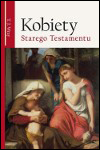 “Kobiety Starego Testamentu” is a Polish translation of “Good Girls, Bad Girls” published by Swiety Wojciech Publishers, Poland. 2011.
“Kobiety Starego Testamentu” is a Polish translation of “Good Girls, Bad Girls” published by Swiety Wojciech Publishers, Poland. 2011.
The Birth of Satan: Tracing the Devil’s Biblical Roots
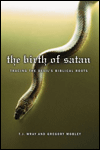 Of all the demons, monsters, fiends, and ogres to preoccupy the western imagination in literature, art, and film, no figure has been more feared―or misunderstood–than Satan. But how accurate are the popular images of Satan? How–and why–did this rather minor biblical character morph into the very embodiment of evil? T.J. Wray and Gregory Mobley guide readers on a journey to retrace Satan’s biblical roots. Engaging and informative, The Birth of Satan is a must read for anyone who has ever wondered about the origins of the Devil.
Of all the demons, monsters, fiends, and ogres to preoccupy the western imagination in literature, art, and film, no figure has been more feared―or misunderstood–than Satan. But how accurate are the popular images of Satan? How–and why–did this rather minor biblical character morph into the very embodiment of evil? T.J. Wray and Gregory Mobley guide readers on a journey to retrace Satan’s biblical roots. Engaging and informative, The Birth of Satan is a must read for anyone who has ever wondered about the origins of the Devil.
Listen to TJ Wray and Gregory Mobley speak about The Birth of Satan on NPR’s On Point with Tom Ashbrook: Click Here to Listen
“An informative study of the biblical origins of Satan… With resourceful though never excessive citation, Mobley and Wray make a good job of pinning down the roots of a notoriously protean character.”
—The Times Literary Supplement
“Let’s admit it. Even in a secular age we are all still fascinated by Old Harry. Even though the devil appears only rarely in the Bible, he is a recurrent presence in the religious and literary imagination. Why? The authors skillfully and humorously trace the origin and history of Satan and explain why we would miss him if he were gone.”
—Harvey Cox, author of When Jesus Came to Harvard
“Making sense out of evil is part of humanity’s endless quest to discover the meaning of life. This book illuminates that quest by tracing the history of Satan through the lens of the Judeo/Christian faith story. In an engaging manner, it forces us to realize that either by making Satan a literal being or by dismissing the devil as pre-modern mythology we are still shaped by its ever present shadow.”
—John Shelby Spong, author of The Sins of Scripture
“What a delightful recipe for an interesting and informative reading experience: an inherently interesting topic, sound scholarship, and an utterly engaging style sprinkled with humor! The end result is an engrossing journey through the diverse origins and complex development of the notion of Satan as arch-fiend, concluding with a thoughtful essay on the function and significance of devil-language in human experience. I heartily recommend this book to anyone who is curious about the topic, about which both religious and non-religious folk tend to be oh, so knowledgeable, yet oh, so ignorant.”
—Russell Pregeant, Professor of Religion and Philosophy, Emeritus, Curry College, Visiting Professor in New Testament, Andover Newton Theological School
“As intriguing, complicated, and pervasive as the devil himself, this volume tells it all. Essentially a biblical tale, it locates the biblical stories in the tribal cultures from which they arose, intersecting them with classics of Western literature. It”s a must read for those who are interested in, or troubled by, Satan.”
—Raymond F. Collins, Warren-Blanding Professor of Religion, Professor of New Testament, The Catholic University of America
From Publishers Weekly:
Where the devil did the devil come from? Wray, a Roman Catholic who teaches religious studies at Salve Regina University, and Mobley, a Protestant professor of Old Testament at Andover Newton Theological School, suggest that the early Hebrews struggled with the puzzle of a God who is the source of both good and evil. As Israel continued to evolve toward a clearer monotheism, it was considered prudent to cast off the negative characteristics of the one true God—which the authors call “repellant aspects of Yhwh”)—and embody them in a personality who would become the biblical “Satan.” Beginning with Genesis, the authors trace the development of “the devil” until he appears fully formed in the New Testament, where his role is “to serve as the cosmic scapegoat, saving God from blame for evil.” Wray and Mobley pay particular attention to the beliefs of many of Israel”s neighbors and their influence on her emerging faith in a cosmic evil being. Ultimately, they reject the concept of a personal Satan, but acknowledge its usefulness in dealing with the idea of evil. Written at a popular level, this book offers an interesting and challenging alternative to traditional beliefs. (Oct. 5)
Copyright © Reed Business Information, a division of Reed Elsevier Inc. All Rights Reserved.
From Booklist:
A recent Gallup poll revealed that a majority of Americans believe in Satan, aka, most commonly, Lucifer and Mephistopheles, but whatever the moniker, the devil, evil incarnate. Wray and Mobley find this ultimate villain”s origins in a biblical character and in early Jewish and Christian writings outside of the scriptures. They try to understand why we as a species strive to feel fearful, why being frightened–vicariously, at least–is so appealing. Satan appears fewer than a dozen times in the Hebrew Bible, truly rising to prominence in the New Testament, especially in the Revelation, in which Satan manifests as Jesus” archrival. Wray and Mobley explain how that characterization came about, examine how Satan”s image developed over the centuries, partly under the influence of such writings as Dante”s Divine Comedy and Milton”s Paradise Lost and investigate the centuries-long witch-hunt craze before advancing to contemporary times to inspect how religious doctrine and popular culture have affected images of the modern Satan. A thoughtful, informative examination. June Sawyers
Copyright © American Library Association. All Rights Reserved.
Surviving the Death of a Sibling
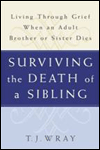 When T.J. Wray lost her 43-year-old brother, her grief was deep and enduring and, she soon discovered, not fully acknowledged. Despite the longevity of adult sibling relationships, surviving siblings are often made to feel as if their grief is somehow unwarranted. After all, when an adult sibling dies, he or she often leaves behind parents, a spouse, and even children—all of whom suffer a more socially recognized type of loss.
When T.J. Wray lost her 43-year-old brother, her grief was deep and enduring and, she soon discovered, not fully acknowledged. Despite the longevity of adult sibling relationships, surviving siblings are often made to feel as if their grief is somehow unwarranted. After all, when an adult sibling dies, he or she often leaves behind parents, a spouse, and even children—all of whom suffer a more socially recognized type of loss.
Based on the author’s own experiences, as well as those of many others, Surviving the Death of a Sibling helps adults who have lost a brother or sister to realize that they are not alone in their struggle. Just as important, it teaches them to understand the unique stages of their grieving process, offering practical and prescriptive advice for dealing with each stage.
In Surviving the Death of a Sibling, T.J. Wray discusses:
- Searching for and finding meaning in your sibling’s passing
- Using a grief journal to record your emotions
- Choosing a grief partner to help you through tough times
- Dealing with insensitive remarks made by others
Warm and personal, and a rich source of useful insights and coping strategies, Surviving the Death of a Sibling is a unique addition to the literature of bereavement.
For online grief support and to connect with other surviving adult siblings, join our Adult Sibling Grief Facebook page.
Also available in an audio-book format, published by Tantor. See Audible: https://www.audible.com/pd/Self-Development/Surviving-the-Death-of-a-Sibling Audiobook/B01IA61E2S?qid=1496175655&sr=1-5
“If you or someone you love has experienced the death of an adult sibling, then buy this book. Wray is a captivating story teller who weaves stories of herself and many other sibling grievers to bring clarity and understanding to the complex process of sibling grief. Insightful, consoling, and filled with helpful, proactive steps designed to help surviving siblings cope with their devastating loss, Surviving the Death of a Sibling is a “must read” for every surviving sibling.”
—Tom Golden LCSW, author of Swallowed by a Snake: The Gift of the Masculine Side of Healing and creator of Webhealing.com
Grief Dreams
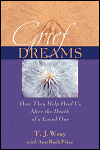 A program for using dreams as a tool for healing loss The universal experience of grief dreams can help us heal after the death of a loved one. T.J. Wray and Ann Back Price show how dreams can be uplifting, affirming, consoling, and inspiring. The authors guide readers in ways to understand and value their dreams, how to keep a grief dream journal, and how to use dreams as tools for healing and consolation. This book is designed to help mourners reclaim some measure of power in navigating the most difficult journey of their lives. And, because it is helpful for any type of loss, Grief Dreams is an ideal condolence gift. Dr. T. J. Wray, author of Surviving the Death of a Sibling: Living Through Grief When an Adult Brother or Sister Dies, is an Assistant Professor of Religious Studies at Salve Regina University in Newport, Rhode Island and the creator of www.griefdreams.com. Ann Back Price is a Jungian psychoanalyst in private practice and a Clinical Teaching Associate at Brown Medical School in Providence, Rhode Island.
A program for using dreams as a tool for healing loss The universal experience of grief dreams can help us heal after the death of a loved one. T.J. Wray and Ann Back Price show how dreams can be uplifting, affirming, consoling, and inspiring. The authors guide readers in ways to understand and value their dreams, how to keep a grief dream journal, and how to use dreams as tools for healing and consolation. This book is designed to help mourners reclaim some measure of power in navigating the most difficult journey of their lives. And, because it is helpful for any type of loss, Grief Dreams is an ideal condolence gift. Dr. T. J. Wray, author of Surviving the Death of a Sibling: Living Through Grief When an Adult Brother or Sister Dies, is an Assistant Professor of Religious Studies at Salve Regina University in Newport, Rhode Island and the creator of www.griefdreams.com. Ann Back Price is a Jungian psychoanalyst in private practice and a Clinical Teaching Associate at Brown Medical School in Providence, Rhode Island.
“Exploring the all too often unreported reveries of the bereaved, this pioneering volume reveals how the spiritual and psychological elements of grief dreams can assist through the circuitous journey through the ‘valley of the shadow.’ And it does so with both understanding and a profound sense of consolation.”
—Rabbi Earl A. Grollman, author, Living When a Loved One Has Died
“This book is a rare find—one that both clinicians and bereaved persons will find not only thoughtful but helpful. This book is a wonderful gift that expands our knowledge of the experiences that arise as we mourn.”
—Kenneth J. Doka, professor, the College of New Rochelle, and senior consultant, the Hospice Foundation of America
“In Grief Dreams T. J. Wray and Ann Back Price have written a sensitive, intelligent guide for people who are grieving the death of a friend or family member and who want to learn more about the strange dreams they are experiencing. Grief Dreams is a trustworthy companion in the mourning process.”
—Kelly Bulkeley, former president, the Association for the Study of Dreams, and author, Visions of the Night and The Wilderness of Dreams
“Beautifully written and eminently practical, Grief Dreams is a groundbreaking healing resource for anyone who has experienced the death of a loved one. A wonderful and consoling guide to the world of dreams and how they help us move through bereavement.”
—Tom Golden, LCSW, author, Swallowed by a Snake: The Gift of the Masculine Side of Healing, and creator of Webhealing.com
